Find Yourself In A Winter Garden
Gardens do not change frequently because most gardeners do not get new ideas very often. They’re used to their flowers in spring, fruits in summer and foliage in fall. Then the garden goes to sleep and becomes a deserted wasteland of dormant denizens in winter.
But change is good. Recently, those of us on both coasts in Hardiness Zones 6b-9 have begun to realize that winter is the fourth season of pleasure in the garden free from heat stress, annoying insects and the need to water. In recognizing this, Elizabeth Lawrence wrote a very influential book on the subject in 1973 called Gardens in Winter. It inspired such professionals as the late J.C. Raulston of Raleigh, N.C., garden writer Peter Loewer and myself to promote a revolution in thinking about how to create winter experiences in the garden.
The Idea
A winter garden is a temperate zone blend emphasizing herbaceous and woody plants that have one or more significant features of interest during the period of freezing weather. I garden in Charlotte, N.C., which is borderline Hardiness Zones 7-8. I view winter as between Thanksgiving and April 1. It does not coincide with the astrological winter December 21-March 21 but is a period when days are above freezing (with a handful of exceptions), and nights are below 40° F.
However, it is not a “dead” time in the traditional view of an interval when there is no need to walk about and look at anything. This may be true further north where the ground is frozen solid, and there is a foot of snow; but in Zone 6 and southward, winter can be a glorious time of flowering and plant enjoyment and should be anticipated and planned for as much as any other season. It is a time to look at forms, flowers and foliage and to enjoy buds, blooms, bouquets and barks without all those pesky summer leaves getting in the way.
As with any season, you should direct customers to make plant choices based on a display of at least two good characteristics throughout the year, such as pretty spring flowers and bright fall foliage, interesting winter form and pleasant floral fragrance, or attractive bark and colorful fruits. There are some exceptions to this, as some outstanding garden plants have only one brief period of interest, but these can be in the minority in the winter garden.
Plant Specifics
Now you are ready to consider some specific plants. There are hundreds to choose from, with more becoming available every year. The Winter Garden lists some 450 species and cultivars that have at least some winter interest. Most have ordinary garden requirements; but almost all come from climates (in China, Japan and the Mediterranean) where the winters are less harsh, hence the plants flower during our mild winter days. On the other hand, while our winters in the South may be mild, summers can be brutally hot and humid. Some winter-interest plants (notably from Chile and Southern California) that do well in the Pacific Northwest will not tolerate the heat. Most natives of the colder Southern regions of the United States do not bloom in winter because there can be late freezes well into what we might call spring, and they are adapted not to take that risk.
Below we will look at some less-well-known examples of flowers, fragrances, forms, foliage and barks that work well for the winter garden.
Winter Sweet (Chimonanthus praecox). This large shrub grows to 15 feet, forming a unique swollen base at ground level and producing rough-barked branches. The flowers are about 1 inch long, yellowish with a reddish center and extremely fragrant in January. The foliage does not produce fall color, and there is no other seasonal point of interest. But, this is the one reliable plant for bloom from mid-December to late January, a time when little else is in flower. ‘Luteus’ has spectacular, show-stopping, clear-yellow flowers. It is hardy in Zones 7-9.
Japanese Apricot (Prunus mume). A favorite of the late J.C. Raulston without whose promotion this species would still be virtually unknown and a stalwart of the winter garden, this small tree has smooth, green bark on young twigs and characteristic shallow, disk-shaped, pink flowers produced in abundance in mid-February. One wave of severe cold may kill all the visible flowers, but new ones will open shortly. The awkwardly-formed, thorny, wild-type tree itself may not be attractive there are several good cultivars selected for various forms and flower colors but it is grand to see in mass-bloom on a cold winter day. Hardy in Zones 6-9.
Okame Cherry (Prunus x ‘Okame’). Another great cherry that flowers in late February, it is my candidate for one of the best 4-season plants and is being more widely planted. It has beautiful, rich-pink, cold-tolerant flowers in the dead of winter. The bark is a handsome, smooth mahogany color. The summer foliage is clean and medium sized, turning a good red color in fall. The form is an attractive, compact tree (to 25 feet), suitable for small yards and city streets. Alas, there are no colorful fruits. Hardy in Zones 5-8.
Chinese Witchhazel (Hama-melis mollis and Hybrids). Witchhazel is the group of plants I most look forward to every February to early March for fantastic flowers. These spreading-to-upright shrubs grow to 15 feet and have one of the best fall color displays. Nothing can beat the wild-type Hamamelis mollis, whose abundant, slightly fragrant flowers consist of four narrow, spider-like, rich-yellow petals against a dark-red sepal cup. There are, however, many hybrids available now that expand these colors into rich, rusty oranges (such as ‘Jalena’), reds, soft yellows and bright yellows (especially ‘Arnold’s Promise’). The latter has a distinctive upright form that makes it ideal for the small garden. Be warned that these hybrids are all grafted and will send up unwanted sucker sprouts that must be removed. Hardy in Zones 5-8.
Yellow Paperbush (Edgewor-thia chrysantha). This is by far the single most outstanding plant of the winter garden. Not to be confused with the earlier popularized Edgeworthia papyrifera, which has Á smaller and less-fragrant flowers, E. chrysantha has everything a winter plant should have. It is a shade-loving, multi-stemmed shrub (to 6 feet) with attractive, large, thin, green leaves that do not turn a good fall color (sorry about that!). It produces large clusters of very conspicuous silver flower buds that look like Christmas tree ornaments on the naked twigs. These open into golf-ball-sized clusters of extremely fragrant yellow flowers in late February. The twigs themselves are stout, reddish brown with white flecks and normally branch in threes a unique trait. The plant grows rapidly with regular watering and will form a neat rounded mass of stems in just three years. While new growth has been hurt by late frosts, mature plants have been unscathed by brief periods of 0° F. Younger plants should be protected their first winter. Hardy in Zones 7-9. Camellias (Camellia japonica Hybrids). These plants hardly need to be mentioned, as they are diverse and well-known winter-flowering evergreen shrubs. They come in a variety of sizes, forms and leaf textures. Flowers range from white and pink to red and variegated. Each cultivar has its own season of winter bloom (early, middle, late), and the conspicuous flower buds lead to anticipation. However, one cultivar is worth singling out, and that is ‘Lady Clare’. It is unique in that, for us here in North Carolina, it flowers from Thanksgiving through March and even into April producing a few flowers every day. It has very large, 4-inch, single, rich-pink flowers that contrast well with the dark-green foliage. The shrub is spreading, informal and can reach 12 feet. If a camellia becomes too large, just cut it to the ground in spring, and it will regrow nicely to bloom again in two years (this is a good way to get rid of camellia scale). New hardier camellias are being produced. Hardy in Zones 7-9.
Weeping Katsura (Cercidiphyllum japonicum ‘Pendula’). It forms a magnificent, cascading, small tree (to 25 feet). It is one of the finest weeping trees for the South, where it is relatively fast growing. The round, heart-shaped summer leaves have great fall color, and the red winter buds offer a pleasing sight. It fits in well with other standard small trees and shrubs and is wonderful in late-afternoon sun. Try mixing with big-budded deciduous magnolias and the beautiful-barked Clethra barbinervis. Other great weeping plants include Kousa dogwoods, ‘Snow Fountains’ weeping cherry and the new ‘Cascade Falls’ weeping baldcypress. Hardy in Zones 4-8.
Alabama Croton (Croton alabamensis). This is a rare native shrub found almost exclusively in three counties in central Alabama where it grows sunny, dry and in rocky woods. It produces terminal clusters of small, yellow flowers in late winter, but its greatest appeal is the unique semi-evergreen leaves. Like the unrelated elaeagnus, croton leaves have silvery scales covering both surfaces giving them an olive-green color above and gray-white below. In winter the older, larger leaves turn a rich-orange color unlike any other leaf I know. These orange leaves last well into the coldest weather and contrast nicely with the silvery younger leaves that remain green. The young twigs are gray-white as well. Michael Dirr, professor of horticulture at the University of Georgia, says this plant is garden worthy, and the leaves smell like bananas when bruised. While uncommon in cultivation, it may be sought from specialty nurseries. Grow in light shade. Hardy in Zones 6-9.
Japanese Fatsia (Fatsia japonica). It provides robust winter foliage with its large lobed leaves up to 16 inches across. It forms a large, multi-stemmed shrub in light shade. In early winter (December) the plant produces an abundance of creamy-white flowers in spherical clusters held above the rich-green foliage, followed by persistent bunches of blue-black berries. It is a breathtaking sight in the right setting but difficult to match with other plants. This non-invasive plant should be used more when a bold look is desired. Hardy in Zones 7-10.
Paperbark Maple (Acer griseum). Truly a specimen tree, growing to 30 feet and providing 4-season appeal, its delicate, hairy spring leaves mature into compound leaves with three leaflets, turning beautiful mixed colors in fall. The branching pattern of the tree is formal, showing off the magnificent cinnamon-colored bark that peals off in thin sheets. Plant where you can touch it when you walk by. Hardy in Zones 5-8.
Other plants with great winter bark are lace-bark line (Pinus bungeana), snake-barked maples (Acer pensylvanicum and A. capillipes) and the best white-barked birch for the South, Betula albosinensis.

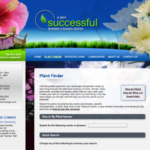

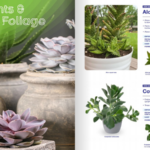
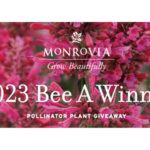



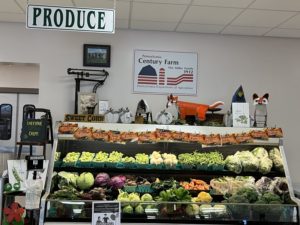
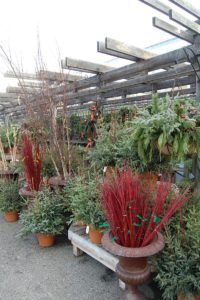

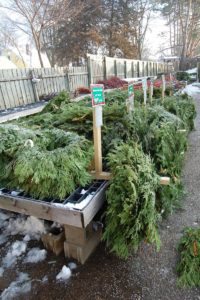
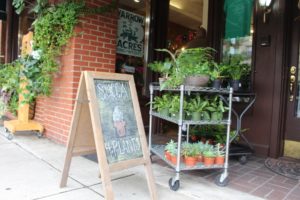
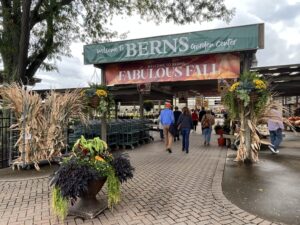


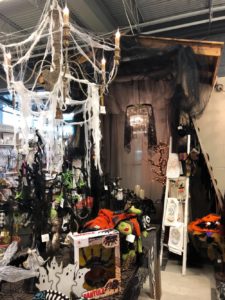
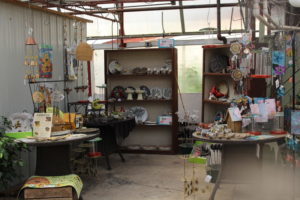
 Videos
Videos





